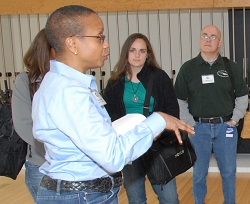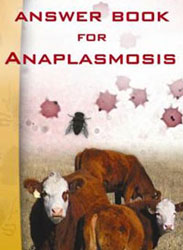 Agriculture Secretary Tom Vilsack’s announcement that $2 million will be made available to dairy, beef, poultry and swine producers to help cut energy-related production costs is a positive step that can produce long-term savings for dairy farmers, according to Richard Clauss, vice chair of the Innovation Center for U.S. Dairy and a dairy producer from Hilmar, Calif.
Agriculture Secretary Tom Vilsack’s announcement that $2 million will be made available to dairy, beef, poultry and swine producers to help cut energy-related production costs is a positive step that can produce long-term savings for dairy farmers, according to Richard Clauss, vice chair of the Innovation Center for U.S. Dairy and a dairy producer from Hilmar, Calif.
“In these tough economic times, anything we can do to cut energy costs will improve our bottom line and help keep producers in business,” Clauss said. “Today’s announcement is a step forward in making energy evaluations more broadly available to producers.”
The new agriculture energy conservation and efficiency initiative, announced in conjunction with a meeting of the Innovation Center’s Sustainability Council here today, will provide funds for on-farm energy audits in fiscal year 2010 and will cover approximately 1,000 energy evaluations in 29 states. Funding for this initiative is being made available through the Natural Resources Conservation Service’s Environmental Quality Incentives Program (EQIP).
“This new energy conservation and efficiency initiative is an example of the kind of support envisioned in the memorandum of understanding between the Innovation Center for U.S. Dairy and the USDA,” said Thomas P. Gallagher, CEO of the Innovation Center for U.S. Dairy and Dairy Management Inc.™ “It makes good business sense for producers and is good for the environment.”
The first step of the new initiative is funding on-farm energy evaluations that can help producers identify how their operations can become more energy efficient. Producers will select an independent, certified Technical Service Provider who will conduct the audits. Energy savings recommendations identified in the evaluations may be implemented by producers at their discretion. Partial funding may be available from the USDA to assist producers in cost-effective implementation of audit recommendations.
“The energy assessments and management plans provided for in this initiative will give producers tools they can use to reduce on-farm energy costs at a time when they are being squeezed financially,” said Jerry Kozak, president and CEO of the National Milk Producers Federation. “Producers who choose to take advantage of this program can benefit by identifying measures they can implement to cut on-farm production costs.”
States participating in the initiative are: Alabama, Arizona, Arkansas, California, Colorado, Connecticut, Florida, Georgia, Idaho, Louisiana, Maine, Maryland, Massachusetts, Mississippi, Nevada, New Hampshire, New Mexico, New York, Oklahoma, Pennsylvania, Rhode Island, South Dakota, Tennessee, Texas, Utah, Vermont, Virginia, West Virginia and Wisconsin.
Source: Innovation Center for U.S. Dairy
![]() Dairy processor Land O’ Lakes is closing its cheese plant in Tulare, Calif. and laying off 80 employees.
Dairy processor Land O’ Lakes is closing its cheese plant in Tulare, Calif. and laying off 80 employees.







 Anaplasmosis is a tick-borne disease that causes loss of production and abortion in beef cattle and significant decreases in milk production in dairy cattle.
Anaplasmosis is a tick-borne disease that causes loss of production and abortion in beef cattle and significant decreases in milk production in dairy cattle.
